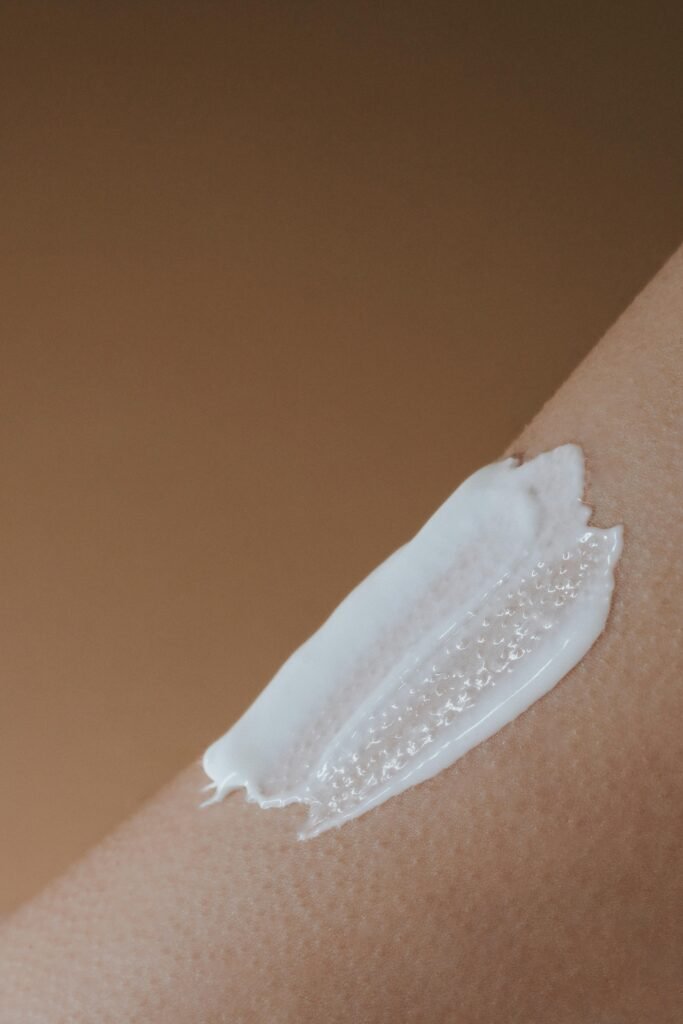If you’re new to the world of guns and want to learn how to properly clean and maintain your firearm, then you’ve come to the right place. In this article, we’ll provide you with a step-by-step guide that will make the process of cleaning your gun easy and straightforward, even if you have little to no experience. Whether you’re a beginner or just looking for a refresher, this guide will help you understand the importance of gun cleaning and show you how to do it safely and effectively. So, grab your cleaning kit and let’s get started!

This image is property of images.pexels.com.
Gather the necessary materials
Before you begin cleaning your gun, it’s important to gather all the necessary materials. Having the right tools on hand will make the cleaning process much easier and more efficient. Here’s a list of essential items you’ll need:
- Cleaning rod: A long, slender rod used to clean the barrel of the gun.
- Bore brush: A brush specifically designed to scrub the inside of the barrel.
- Cleaning patches: Small pieces of cloth used to remove dirt and debris from the gun.
- Cleaning solvent: A solution that helps break down and remove dirt, residue, and grime.
- Gun oil: A lubricant that ensures smooth operation of moving parts.
- Toothbrush: A small brush with bristles that can reach tight spots.
- Cotton swabs: Useful for cleaning hard-to-reach areas.
- Microfiber cloth: A soft cloth that won’t scratch the surface of the gun.
- Safety glasses: Protects your eyes from any debris or chemicals during the cleaning process.
- Gloves: Keeps your hands clean and protects them from any harsh chemicals.
Having all these materials within reach will make the gun cleaning process much smoother and more enjoyable.
Unload the gun and ensure it is safe
Safety should always be the number one priority when it comes to handling firearms. Before you begin cleaning your gun, you must ensure that it is unloaded and safe to work on. Here’s how you can do it:
-
Remove the magazine: If your gun has a detachable magazine, remove it and set it aside. Make sure to double-check that the magazine is empty.
-
Check the chamber for any remaining ammunition: Pointing the gun in a safe direction, pull back the slide or bolt to visually inspect the chamber for any ammunition. Ensure there are no rounds present.
-
Point the gun in a safe direction: Even though you’ve confirmed that the gun is unloaded, it’s still essential to keep the muzzle pointed in a safe direction while you work on it. This ensures that even in the unlikely event of an accidental discharge, no one will be harmed.
Taking these safety precautions ensures that you can work on your gun without any risk of accidental discharge or injury.

This image is property of images.pexels.com.
Disassemble the gun
Once you’ve confirmed that the gun is unloaded, it’s time to disassemble it for a thorough cleaning. It’s essential to refer to the user manual for your specific gun model, as disassembly instructions may vary. Here’s a general guide to help you get started:
-
Refer to the user manual for specific instructions: Different guns have different disassembly procedures, so it’s crucial to consult the user manual for detailed guidance on how to take your gun apart safely.
-
Remove the slide or bolt: Depending on the type of firearm you have, you’ll need to remove the slide or bolt from the frame. This typically involves pressing a release button or lever and sliding the component off.
-
Take apart other components as necessary: Some guns may have additional components that need to be disassembled for cleaning. This could include removing the grip, trigger mechanism, or any other parts that can be disassembled safely.
Taking the time to properly disassemble your gun ensures that you can access all the parts that require cleaning and maintenance.
Clean the bore and barrel
The bore and barrel of your gun are where the bullet travels when it is fired, making it crucial to keep them clean. Here’s how you can effectively clean the bore and barrel:
-
Attach the bore brush to the cleaning rod: Take your bore brush, which is specifically designed to fit the caliber of your gun, and attach it securely to the cleaning rod.
-
Dip the brush in cleaning solvent: Apply a few drops of cleaning solvent onto the bristles of the bore brush. This solvent helps break down any residue or debris stuck inside the barrel.
-
Insert the cleaning rod into the barrel: Gently insert the cleaning rod with the attached bore brush into the chamber end of the barrel. Make sure it goes all the way through the bore.
-
Move the brush back and forth to scrub the inside of the barrel: Using a back-and-forth motion, move the brush through the entire length of the barrel. This action scrubs away any fouling or debris that has built up.
-
Replace the dirty patches on the bore brush as needed: As you continue scrubbing, the cleaning patches on the brush will get dirty. Replace them with clean ones as necessary to ensure effective cleaning.
-
Continue until the patches come out clean: Repeat the scrubbing motion with the bore brush until the cleaning patches come out clean, indicating that the bore is free from residue and debris.
Cleaning the bore and barrel is critical for maintaining the accuracy and reliability of your firearm.

This image is property of images.pexels.com.
Clean the slide or bolt
The slide or bolt of your gun is responsible for cycling the ammunition and ensuring proper functioning. To keep this crucial component in excellent condition, follow these steps:
-
Apply solvent to a toothbrush: Take a toothbrush and apply a small amount of cleaning solvent directly onto the bristles. The solvent will help dissolve any dirt or grime.
-
Scrub the slide or bolt to remove dirt and debris: Using the solvent-soaked toothbrush, gently scrub the slide or bolt. Pay close attention to areas where dirt and debris tend to accumulate, such as grooves and corners.
-
Use cotton swabs to reach tight spots: For hard-to-reach areas, use cotton swabs soaked in the cleaning solvent. These can help you effectively clean spots that the toothbrush may not be able to reach.
-
Wipe down with a clean cloth: After scrubbing, use a clean microfiber cloth to wipe away any residual solvent, dirt, or debris. This will leave the slide or bolt clean and ready for lubrication.
Cleaning the slide or bolt thoroughly ensures smooth operation and reliable functioning of your gun.
Clean other gun components
Aside from the barrel and slide/bolt, your gun may have additional components that require cleaning. It’s essential to follow the user manual for specific instructions on how to clean these parts effectively. Here are some general guidelines:
-
Follow the user manual for specific instructions: Different guns have different configurations, so always consult the user manual for detailed guidance on cleaning other components.
-
Use solvent and a toothbrush to remove dirt and grime: Apply cleaning solvent to a toothbrush and use it to scrub any dirt or grime off the components. Be gentle yet thorough to ensure you remove all debris effectively.
-
Wipe down with a clean cloth: After scrubbing, use a clean microfiber cloth to wipe away any residual solvent, dirt, or debris, leaving the components clean and ready for inspection.
By cleaning all the various components of your gun, you ensure that it operates smoothly and efficiently.
Inspect and lubricate parts
After cleaning all the individual components, it’s essential to inspect them for any signs of wear or damage. Additionally, lubrication is necessary to ensure that moving parts operate smoothly. Here’s what you need to do:
-
Check for any signs of wear or damage: Examine each component closely for any signs of wear, damage, or corrosion. Pay particular attention to areas that experience more friction or pressure during firearm operation.
-
Apply gun oil to appropriate parts: Using a small amount of gun oil, lubricate the parts that require lubrication according to the user manual. Areas such as rails, springs, and contact points generally benefit from lubrication.
-
Ensure smooth operation of moving components: After applying the oil, work the moving components back and forth to distribute the lubrication evenly. This will help ensure smooth operation and prevent any potential malfunctions.
Inspecting and lubricating the parts allows you to catch any issues before they become major problems and helps maintain the longevity and performance of your firearm.
Reassemble the gun
Now that all the components have been cleaned, inspected, and lubricated, it’s time to reassemble your gun. Make sure to follow the user manual for specific instructions on how to put the components back together correctly. Here are some general guidelines:
-
Refer to the user manual for specific instructions: Follow the detailed steps provided in the user manual for your particular gun model. This will ensure that you reassemble the firearm correctly and safely.
-
Put the components back together in the correct order: Start by attaching the slide or bolt back to the frame, ensuring that it locks into place correctly. Then, reattach any other disassembled components, such as the grip or trigger mechanism, following the user manual’s instructions.
Taking the time to reassemble your gun properly ensures that it functions correctly and safely.
Perform a function check
After reassembling your gun, it’s crucial to perform a function check to ensure that everything is in working order. Here’s what you need to do:
-
Ensure proper cycling and operation of the gun: Rack the slide or bolt several times to ensure smooth cycling of ammunition. Pay attention to any abnormal resistance or roughness.
-
Check safety mechanisms: Engage and disengage the safety mechanisms to verify that they are functioning correctly. This includes the safety lever, magazine disconnect, and any other safety features your gun may have.
-
Test trigger pull: Pull the trigger several times with the slide or bolt locked in place to ensure that the trigger pull feels consistent and smooth.
Performing these function checks confirms that your gun is functioning as intended and ensures your safety during future use.
Store the gun safely
Once you’ve completed the cleaning and function check, it’s important to store your gun safely. Proper storage helps prevent unauthorized access and ensures the longevity of your firearm. Here are some essential steps:
-
Unload the gun: Always double-check that your gun is unloaded before storing it. Remove any ammunition from the chamber and magazine, and store them separately from the firearm.
-
Store ammunition separately: Keep your ammunition in a secure location, away from your firearm. This helps prevent any accidental discharge.
-
Use a secure gun safe or lockbox: Invest in a gun safe or lockbox specifically designed for firearms. This provides proper security and prevents unauthorized access.
By following these storage practices, you can keep your gun secure and ready for use whenever you need it.
In conclusion, cleaning your gun is not only essential for maintaining its performance and reliability but also a crucial step in firearm safety. By following this step-by-step guide, you’ll be able to clean your gun effectively and ensure its longevity. Remember to always prioritize safety, follow the user manual for your specific gun model, and use the necessary materials to achieve the best results. Happy cleaning!
